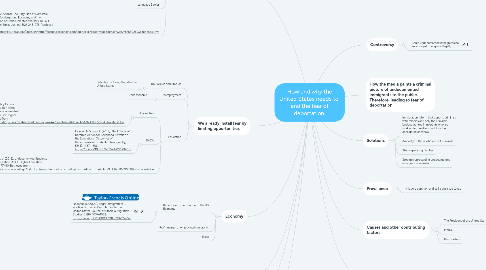
1. Fear and exploitation of undocumented immigrants
1.1. History of racist environment
1.1.1. Bersani, B. E., Fine, A. D., Piquero, A. R., Steinberg, L., Frick, P. J., & Cauffman, E. (2018). Investigating the Offending Histories of Undocumented Immigrants. Migration Letters, 15(2), 147–166. Retrieved from http://ezproxy.lib.utexas.edu/login?url=http://search.ebscohost.com/login.aspx?direct=true&db=a9h&AN=129478296&site=ehost-live
1.2. Fear of family deportation
1.3. Effects on family at home
1.3.1. Garcini, L. M., Galvan, T., Malcarne, V., Pena, J. M., Fagundes, C. P., & Klonoff, E. A. (2017). Mental Disorders Among Undocumented Mexican Immigrants in High-Risk Neighborhoods: Prevalence, Comorbidity, and Vulnerabilities. Journal of Consulting & Clinical Psychology, 85(10), 927–936. https://doi.org/10.1037/ccp0000237
1.4. Language Barrier
1.5. BYRD, N. Z. (2010). The Dirty Side of Domestic Work: An Underground Economy and the Exploitation of Undocumented Workers. DePaul Journal for Social Justice, 3(2), 245–276. Retrieved from http://ezproxy.lib.utexas.edu/login?url=http://search.ebscohost.com/login.aspx?direct=true&db=a9h&AN=57550259&site=ehost-live
2. We already install fear by limiting opportunities
2.1. US Policies and Statues
2.1.1. Definition of being Illegal in the United States
2.2. Unemployment
2.2.1. Jobs available
2.3. Education
2.3.1. Universities
2.3.1.1. Weeden, L. D. (2015). Good Public Policy Occurs under Plyler When In-State College Tuition Rates Are Awarded to Undocumented Bona Fide Resident Immigrants. George Mason University Civil Rights Law Journal, 25(2), 191–216. Retrieved from http://ezproxy.lib.utexas.edu/login?url=http://search.ebscohost.com/login.aspx?direct=true&db=a9h&AN=101865516&site=ehost-live
2.3.2. DACA
2.3.2.1. Hsin, A., & Ortega, F. (2018). The Effects of Deferred Action for Childhood Arrivals on the Educational Outcomes of Undocumented Students. Demography, 55(4), 1487–1506. https://doi.org/10.1007/s13524-018-0691-6
2.3.3. Kim, E., & Díaz., J. (2013). Undocumented Students and Higher Education. ASHE Higher Education Report, 38(6), 77–90. Retrieved from http://ezproxy.lib.utexas.edu/login?url=http://search.ebscohost.com/login.aspx?direct=true&db=a9h&AN=85690538&site=ehost-live
3. Economy
3.1. Benefits and contribution to the US Economy
3.1.1. Nadadur, R. (2009). Illegal Immigration: A Positive Economic Contribution to the United States. Journal of Ethnic & Migration Studies, 35(6), 1037–1052. https://doi.org/10.1080/13691830902957775

